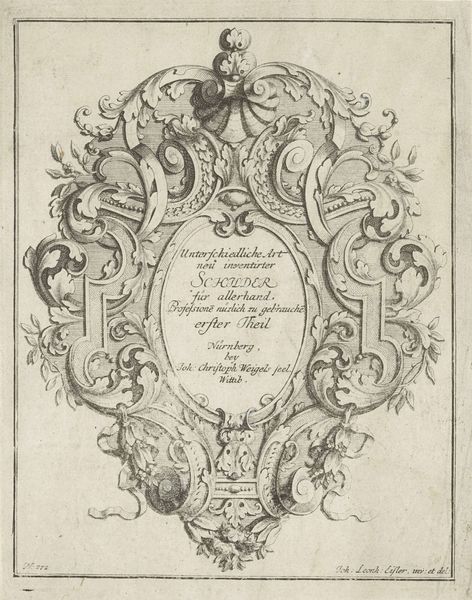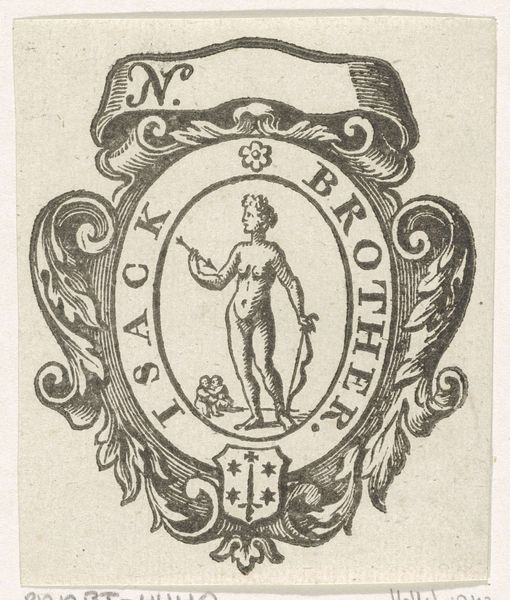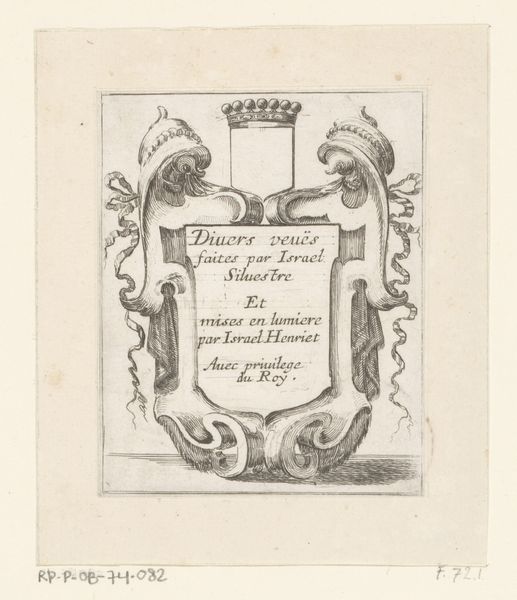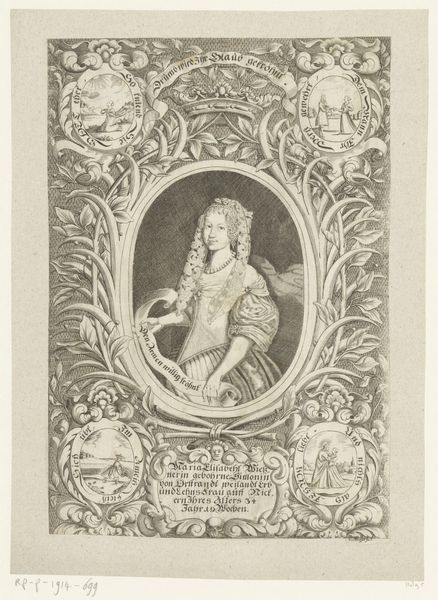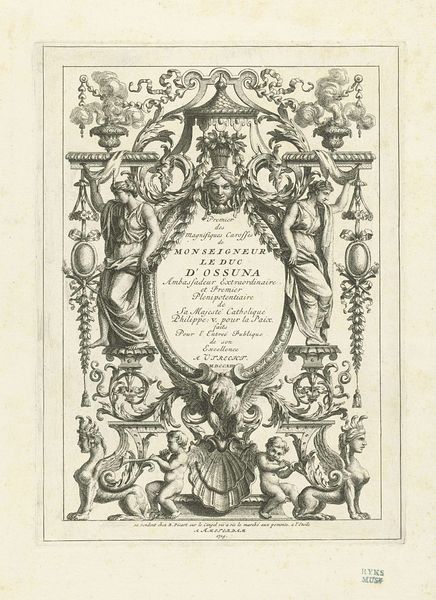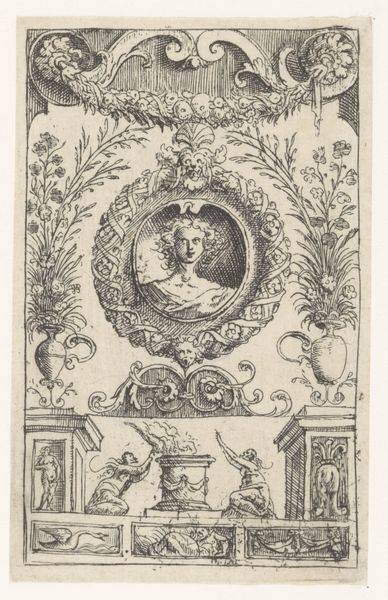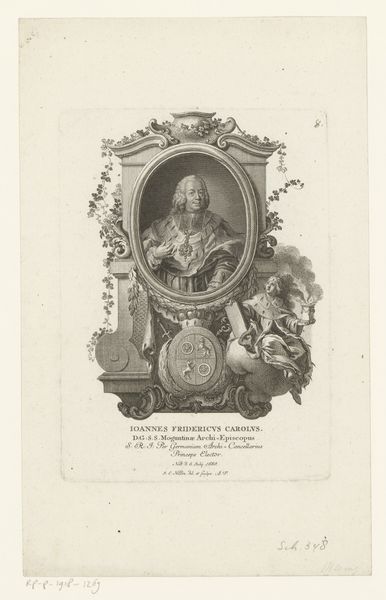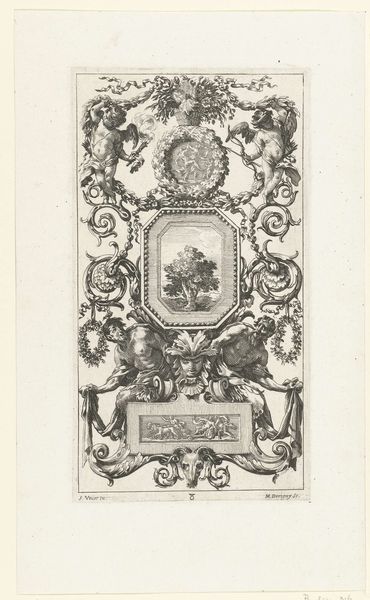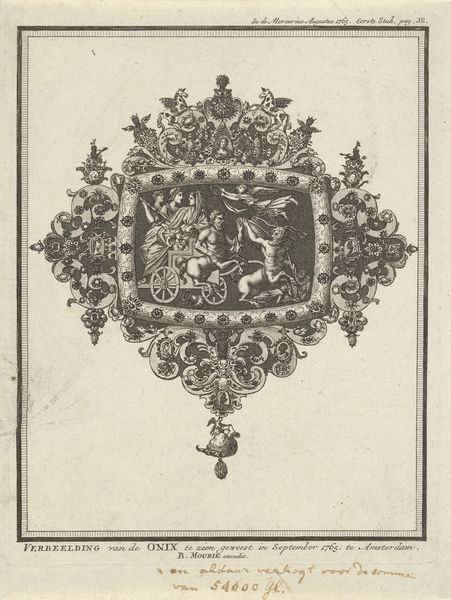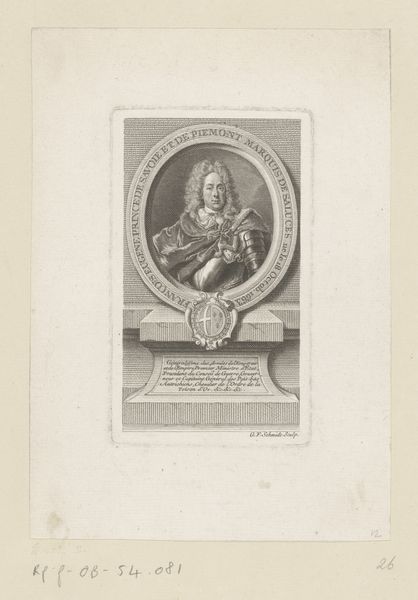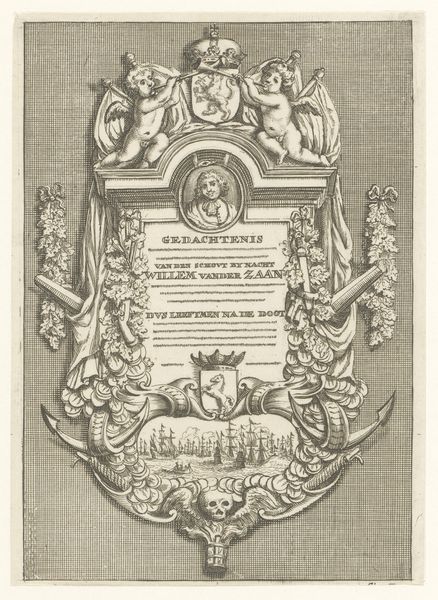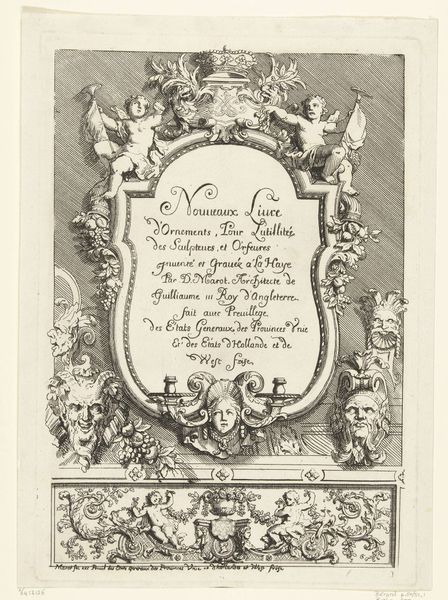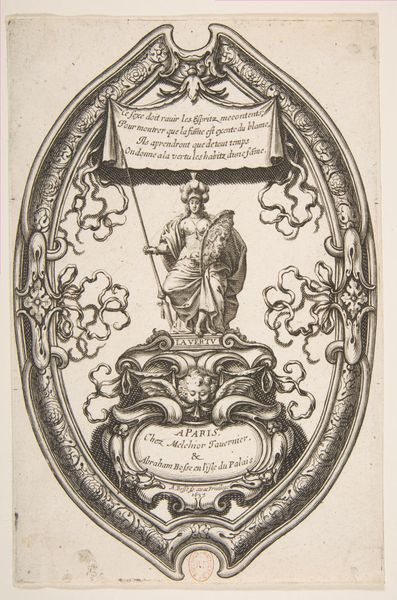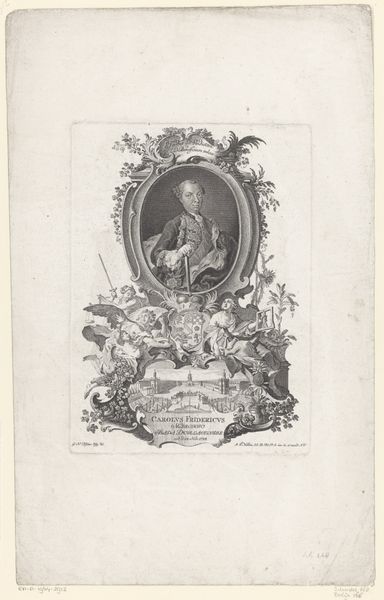
Dimensions: height 191 mm, width 139 mm
Copyright: Rijks Museum: Open Domain
Curator: Here we have "Portret van een jonge vrouw," or "Portrait of a Young Woman," an engraving from the 17th century, crafted by an anonymous artist. Editor: My first impression is one of formalized elegance, although the portrait within seems to be constrained. The stark black and white adds to the gravitas. Curator: It is indeed formal. Look closely at the printmaking technique— the emphasis on line, the creation of tone through hatching. And it appears the image is incorporated into some sort of heraldic or commercial device? This likely served as either a bookplate, a trade card, or a commemorative print, intended for circulation. Notice also that, what appears to be, the Amsterdam coat of arms is present above the image in the composition. Editor: Fascinating. The heraldry certainly suggests identity and perhaps aspiration. I wonder about the motto, “NOSTRA FRATERNITA VIRGINITAS ETVNITA." "Our fraternity, virginity and unity" —what does it signify within this family or guild system? Curator: Given the mention of a manufacturer, and what seems to be an ornate initial, "HF," maybe a collective or association is depicted, advertising the firm's social and familial cohesion. The name inscribed below mentions someone named "Phelipnyus le Febvre," likely connected to that guild of producers. Editor: The combination of heraldic symbolism and commercial identity is fascinating. Consider the visual vocabulary employed: lions flanking the Amsterdam coat of arms symbolize strength, protection, the crown is indicative of authority. There's a deliberate creation of a lasting symbol here. Curator: Absolutely, the design merges individual likeness with these potent emblems. It presents a vision of solidarity and trustworthiness. We could probably discern where their product, Alfileres de Reijna Fabricados was crafted or manufactured via these insignia. Editor: Indeed. The semiotics point us towards an understanding of their social aspirations and how those would resonate for 17th-century Dutch society, the message of unity through their virgin manufacture must have resonated quite deeply. Curator: It certainly reveals the power of image-making during that time. Through these prints, trades could build up a trustworthy rapport, expanding a patron base to keep their presses busy. Editor: Ultimately, these objects acted as carriers of both corporate identity and aspirational ideals. I now view them as carefully constructed messages about group social status.
Comments
No comments
Be the first to comment and join the conversation on the ultimate creative platform.
